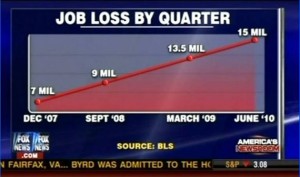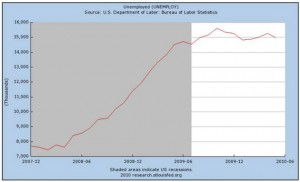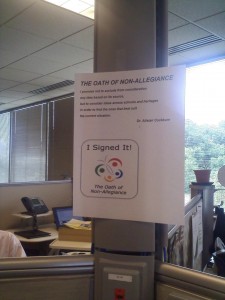Really enjoyed the great Derek Huether’s post about zombie meetings on his blog The Critical Path. And it got me thinking…perhaps our meeting-crazed corporate culture could actually spur some new job growth?
LAPTOP WALKER
Vacationing workaholics often chafe at their spouse’s demand to leave their faithful companion at home. So, offer your services as a laptop walker!
Assure your PM you’ll carry his laptop around the office to ensure it gets proper exercise while he’s away. The head of biz dev can rest easy knowing you’ll bring her laptop into meetings so it can be with other laptops. And thanks to your laptop grooming service, your scrum master will be greeted upon his return by a sparkling clean laptop fresh from its anti-bacterial wipedown, cucumber-melon scented compressed air bath and deep registry cleaning. Appreciation to Chuck Twining for the idea.
STEALTH SCRIBE
Thanks to Agile’s lean documentation tenets, meeting minutes in general have fallen out of fashion. They’re useful, alright (see my previous post on the subject). But some feel they’re a wasteful time-suck, that time saved not doing them can yield more time to write code. That means YOU have to waste more time verbally bringing last week’s absentees up to speed, and argue about what you thought you decided.
But you can have meeting minutes without risking being taunted with epithets like “Agile Wannabe” or “Waterfallooza”. Take the minutes in secret! There are lots of ways to do this. Pretend you’re answering emails while other attendees are talking – completely believable as Fred’s actually doing just that across the table anyway. Use the notes feature on your iPhone – your unsuspecting colleagues will think you’re texting your fantasy team picks while you’re really documenting what you agreed to track on the new landing page. Hah – pwnage!
MEETING BOUNCER
Let’s finally get serious about meetings – time to put the hammer down on equivocators, pontificators and serial opiners. As meeting bouncer, you’ll put attendees on notice that you’re prepared to throw their sorry asses out of the conference room/phone bridge for offenses like:
– Side conversations
– Beginning any remark with the words “In this tough economy”
– Checking into Foursquare – there is no mayor of Conference Rm #203 to oust
– Reading all the words off their PowerPoint slides verbatim
– Not knowing the function-key F8 trick
– Mouth-breathing so loud that call-ins think they called an x-rated chat line



